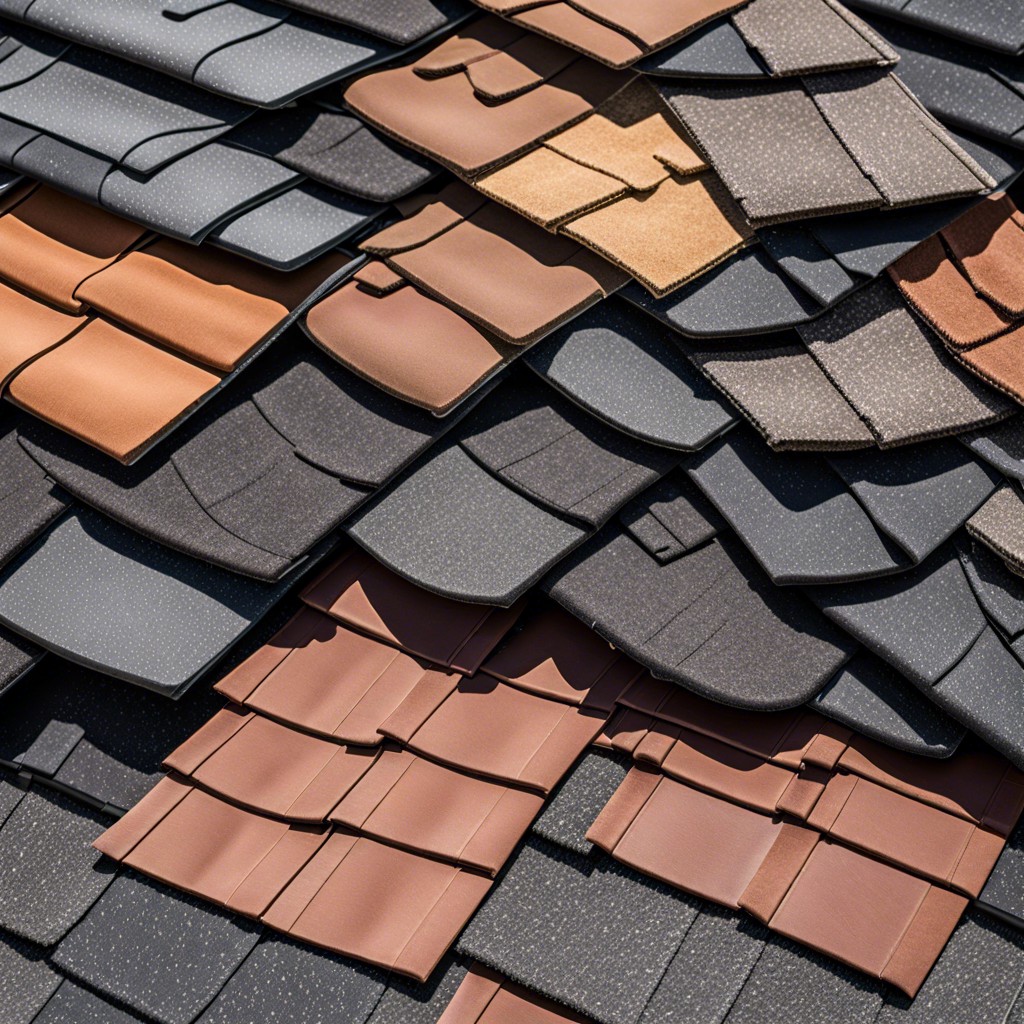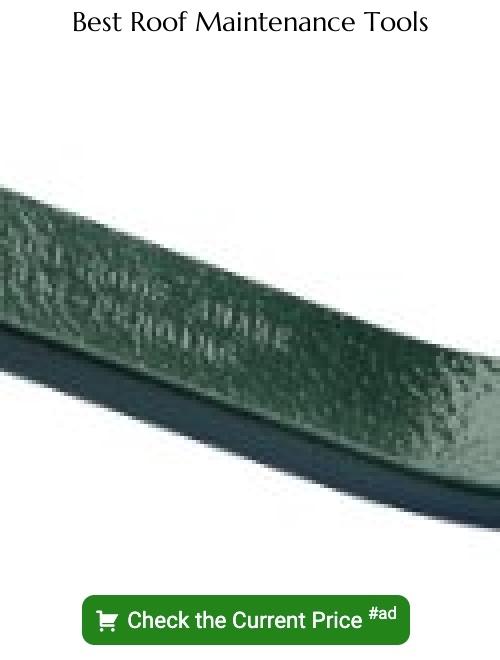Last updated on
Grasping the lifespan of shingle roofs and the array of factors that influence their durability offers valuable insights for proper roof maintenance and informed decision making.
Key takeaways:
- Three-tab shingles: 15-20 years
- Architectural shingles: 20-30 years
- Luxury or premium shingles: 25-30 years or more
- Factors influencing lifespan: climate, maintenance, installation quality
- Average cost: ,000 – ,000 for a complete shingle roof replacement
The Lifespan of Different Asphalt Shingle Types

Three-tab shingles, the most economical option, typically offer a lifespan of 15 to 20 years. Their thinner profile and single layer construction make them less durable than other types.
Architectural shingles, also known as dimensional or laminated shingles, are a more durable option with a life expectancy of 20 to 30 years. The dual-layer design provides additional protection against the elements.
Luxury or premium shingles, the highest quality of asphalt shingles available, boast both aesthetic appeal and longevity, often lasting 25 to 30 years or more. Their multi-dimensional texture and greater weight lend to their enhanced durability.
Factors such as climate, maintenance, and installation quality directly influence the lifespan within these ranges. Regular inspections can help extend a roof’s life by identifying and addressing potential issues early on.
6 Factors That Impact How Long an Asphalt Roof Lasts
Quality of Materials:
Higher-grade asphalt shingles come with longer warranties and improved durability against elements, translating into a longer lifespan for your roof.
Installation:
Proper installation by qualified professionals ensures that the shingles are correctly aligned, nailed, and sealed, preventing early failures and extending the roof’s longevity.
Roof Slope and Configuration:
Steep roofs often shed water and snow more efficiently than flat ones, reducing the risk of water infiltration and extending the life of shingles.
Local Climate:
Areas with extreme weather conditions, such as high winds, hail, or severe temperature fluctuations, can accelerate shingle wear and reduce roof life expectancy.
Ventilation and Insulation:
Good attic ventilation and proper insulation help regulate temperature and moisture levels, preventing heat and moisture buildup that can damage shingles over time.
Roof Maintenance:
Regular inspections, cleaning, and timely repairs of any roof damage, such as replacing worn or damaged shingles and keeping gutters clean, can significantly prolong the life of your shingle roof.
How Much Will a New Asphalt Roof Cost?
The cost of a new asphalt shingle roof is influenced by several factors including the size of your roof, the type of asphalt shingles selected, the roof’s complexity, and your geographical location. On average, homeowners can expect to pay between $5,000 and $10,000 for a complete shingle roof replacement, but prices can vary widely.
- Roof Size: Roofers typically charge by the roofing square. One roofing square equals 100 square feet. The larger the roof, the more materials and labor will be required.
- Shingle Type: Three-tab shingles are usually the most affordable, while architectural shingles are slightly more costly due to their durability and aesthetic appeal.
- Installation Complexity: Roofs with multiple slopes, valleys, or architectural features like skylights can increase labor costs.
- Geographical Location: Labor and material costs can differ significantly based on the region due to variations in the cost of living and the demand for roofing services.
- Additional Costs: Consider potential costs for removing the old roof, waste disposal, and any necessary repairs to the roof deck or structure.
It’s wise to get multiple quotes from licensed and insured roofing contractors to ensure a fair and competitive price for your shingle roof installation.
How to Tell If Your Asphalt Shingles Are Damaged
Asphalt shingle damage is often visually detectable. Look for curled or buckled shingle edges, a sign of both age and heat damage. Missing granules, which can leave bare spots, indicate a loss of shingle integrity and reduced water resistance. Additionally, inspect for cracked shingles, which can result from wind damage and may start to compromise the roof’s protective function.
Also, pay attention to the presence of algae or moss, which could signal moisture retention. Although not always an immediate concern, this can lead to long-term deterioration. Keep an eye out for missing shingles too, as they can lead to leaks and further damage to the underlying roofing structure.
To spot less obvious signs of damage, check the attic for leaks or water damage, especially after significant rainstorms, as this could indicate compromised shingles. Lastly, granules in the gutters or downspouts during routine cleaning can suggest shingle wear that may not be visually noticeable from ground level.
Regular inspections, especially after severe weather, play a crucial role in catching damage early and maintaining the longevity of your asphalt shingle roof.
When Should I Consider Roof Replacement?
Assessing the right time for roof replacement is crucial to home maintenance. Consider these indicators when evaluating your shingle roof’s condition:
- Age of Roof: Asphalt shingles typically last 15-30 years. If yours approach or exceed this range, consult a professional to discuss replacement.
- Granule Loss: Check gutters for shingle granules, which resemble coarse, black sand. Granule loss over time exposes shingles to elements, hastening deterioration.
- Curling or Buckling Shingles: Shingles that are no longer flat against the roof can indicate both age and excessive heat damage.
- Missing Shingles: Gaps in your shingle coverage can lead to leaks and structural damage. Inspect after severe weather and consider replacement if this is frequently noticed.
- Daylight Through Roof Boards: If light can pass into your attic, so can water. This is an urgent sign that roofing integrity is compromised.
- Frequent Repairs: Persistent need for repairs might signal that a full replacement is more cost-effective.
- Sags and Soft Spots: These suggest potential underlying deck rot, often a result of water infiltration over time, necessitating replacement.
- Rising Energy Bills: Inefficient temperature control in the home can be associated with a failing roof.
It’s prudent to seek a professional inspection if you notice any of these signs. An expert can provide a comprehensive assessment and determine if roof replacement is the necessary next step.
FAQ
How often do shingles need to be replaced?
Shingles need to be replaced roughly every 20 years for 3-tab shingle roofs, 25 years for architectural shingles, and approximately 30 years for luxury shingles.
Do 30 year shingles really last 30 years?
While labeled as 30-year shingles, these roofing materials, in reality, do not guarantee a lifespan of 30 years.
What is the average life expectancy of a shingle roof?
The average life expectancy of a shingle roof is approximately 20 years, though it may reduce to around 14 years in warmer climates, and extend up to 20 years or more in the North and Northeastern regions of the United States.
Can a shingle roof last 50 years?
While standard asphalt shingles typically last about 15 years, certain roofing materials such as 50-year shingles and tiles can indeed last up to 50 years, providing a durable yet affordable solution.
How does the climate impact the lifespan of a shingle roof?
The climate greatly impacts the lifespan of a shingle roof as extreme weather conditions like intense heat, high winds, heavy snowfall, and hail can cause significant wear and damage, reducing its longevity.
What steps can homeowners take to extend the life of their shingle roof?
Homeowners can extend the life of their shingle roof by conducting regular inspections, promptly repairing small issues, keeping the roof free of debris, controlling moss and algae growth, ensuring proper attic ventilation, and scheduling professional maintenance.
How do various types of shingle materials contrast in terms of longevity?
Asphalt shingles typically last up to 20 years, wooden shingles about 30 to 50 years, metal roofing up to 70 years, while slate, copper, and tile roofs can last over 100 years.
Related
- How Long Do Roofs Last in Texas: Understand Lifespan and Factors
- How Often Should You Replace a Roof: Essential Maintenance Tips
- Concrete Tile Roof Lifespan: Understanding Durability and Maintenance Factors
- How Often Replace Roof: Essential Tips and Guidelines
- When to Replace Roof: Your Guide to Roof Replacement Indicators

